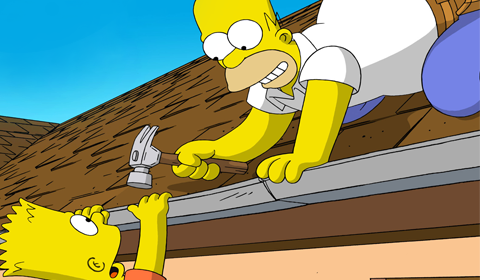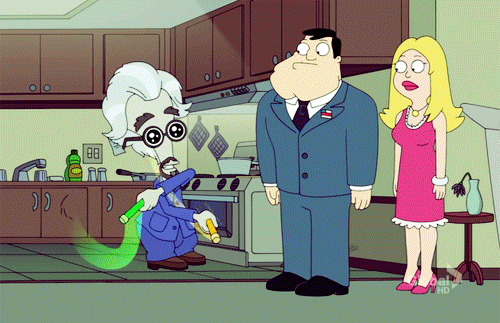The Gamasutra resource regularly publishes articles by developers, art directors and game designers about the industry. We choose the most interesting ones and share them with you.
Seppo Helava, co-founder of Self Aware Games and creator of the games Taxiball, Word Ace, Fleck and Card Ace: Casino (now Big Fish Casino), explains why shareware games in the form in which they exist now should become a thing of the past.
All. I sent the last invitation to my friend. Last time I bought a “time crystal”. This is my last bag of gold coins for $9.99. That’s enough.
For the past four years, shareware games have reigned supreme, and there are reasons for that. The user can play your title without risking anything. If he likes the game, then there are no limits to how much he can spend.
Paid mobile games were hit back in 2009, and they never really recovered from it. Why? Any developer just had to look at Zynga in 2009 – and he could not resist F2P.
Investors are constantly looking at each other in order not to lose sight of something interesting. Right before Zynga went public, I was asked what I thought about it and whether I should invest in this company. My answer was unequivocal: “Don’t even think about it.”
From the point of view of monetization, Zynga’s prospects looked rosy. Unimaginable growth, and so quarter after quarter. She was everywhere. Everyone was talking about her. She was part of the culture, Pincus (Marc Pincus, former CEO of Zynga, – approx. editors) made her the “shining diamond of the Internet.” Every couple of months, people who thought that the chance to hit a big jackpot was about to pass them by, asked if it was worth investing in Zynga. The problem was that despite the shining mountains of money, the company built its empire on sand.
Zynga used pain. And yes, this strategy was super effective.
Pain always works. Need to get information from someone? Here’s a soldering iron for you. In the short term, you will certainly get people to do what you want them to do. There are many variants of pain, so if you have a certain kind of ingenuity, you can create a more or less endless cacophony of suffering. Make the player collect coins for hours so that he begs for the opportunity to pay for an instant upgrade. Make a bunch of adorable collections in which the final piece will be so hard to get that people will pay to stop this agony. Cram a hundred “share with friends” suggestions into the game. Let them appear at the most inopportune moment so that people spam on social networks, whether they want it or not.
Zynga’s strategy was this: we steal a successful game from someone, then fill it with pain, and then sell it everywhere. That’s it, you’re amazing!
The company knew that the initial performance of the project should be high, because that was the case in the original game. This reduced the risk. Plus, Zynga knew how people reacted to pain. That’s it, checkmate, revenue jumps to the skies. And since she was sure that she would make money on the game, she could spend money on marketing, which took the original title out of the game.
But Zynga’s strategy was built only on pain. She didn’t start by creating a beautiful game-instead, she relied on a combination of theft and pain. So was it worth investing in them?
Or take an example King.com and their long-playing “masterpiece” Candy Crush. The game itself is an improved version of Bejeweled, only more flexible and accessible. And the trick with the social card? Brilliant! At the same time, the level design insidiously forces the player to pay for additional movements where they will not help him in any way, regardless of the skill level. And this is not to mention the rumors that the game, depending on the user’s skills, manipulates which element will fall out – in order to squeeze out every last coin.
In the end, you have no choice: you will either hate the game and quit playing it, or you will become immune to pain (and also stop playing, eventually).
Why?
Because you already know that the pain is near
And you have already received all the pleasure from the game that it could give you. You will stop playing it because there is more stick in it than carrot – and this is not what you are looking for from the game.
So maybe this next game, similar to another game, will be better. Maybe she’s different. Maybe it won’t hurt so much. Maybe. Most likely, you won’t even try to find out: when you try, a part of your brain will instantly recognize the visual component of the game that led to the pain – and let you know that this is not the game you are looking for.
What does this mean for the developer?
One “successful” shareware will be similar to another “successful” shareware game. Retention rates for 1/7/30 day will be the same for them. Just like DARPU. The conversion rate will be low both there and there. Why? Yes, because a very small number of players will pay for the game, and everyone else will not care about it.
Why is everyone doing this?
Because that’s what Zynga did. Seriously, if you are a developer of an F2P title, ask yourself why do something that will make 90% of your players spit on the game and not want to spend money on it? In what other area of business is it normal to expect that about 90% of customers won’t even want to pay for a product? And this is not piracy. We say, “This is such a business model – 90% of our players do not support us at all.”
Yes, such a model is quite effective: those who still pay, the nuts can be tightened to the very nowhere. The game will bring in more revenue than a paid project. But this is simply because paid titles assume that the player will make a kind of “leap of faith” – he will spend before it becomes clear what the game is all about. If you think about it, paid games offer a rather strange business model.
People complain about the F2P mechanism, but paid games generally go on a pure hype. Well, maybe even on “word of mouth” – recommendations from those who have already risked and bought the game. All this is generally quite pointless, given that there are distribution channels where the player can experience the gaming experience without any risk at all.
But here’s the thing, the F2P strategy is never better. She is full of pain. The user will either hate the game or develop immunity to it. Yes, he can still continue to play through “I don’t want to”, simply because brain chemistry is an insidious thing.
But I do not know anyone who has quit playing Farmville or Candy Crush, and still speaks warmly about them.
What I’m about to say may seem naive, but it’s true
You can make a game that people will play because they will like it
Yes, even shareware. No, I didn’t fall from nowhere. Look at Hearthstone. Or on League of Legends.
Understand correctly: it is impossible to create a game that will not put pressure on the player at all. There must be a certain pressure, because if there is no pressure, the players will just play your game forever, and you will not earn anything and go broke. But pressure is not the same as pain.
Instead of making them afraid of monetization, can you give them something they will appreciate? Not only to avoid pain, but also in the long run? In League, people buy characters because they get attached to them. In Hearthstone, every time a player buys a set of cards, his game strategy changes. These things are permanent – they allow the player to express himself.
Users appreciate different things. An opportunity to express yourself. Saving time. Uniqueness. Socialization. Isolation. Tournament tables. Rewards for achievements. Each of these things is an opportunity to give the player what he likes. Potentially, this is what the player can spend money on.
The reason why the developers have accepted that only 10% of the players will spend money in their game is that they were taught that the principle of F2P is normal. That it’s okay to hit people on the head until they give a dollar to stop being bullied. That’s not how they actually behave, and, more importantly, that’s not how game developers should behave.
The only acceptable conversion rate is 100%
I understand that it can be read as “Shake ALL the money out of EVERYONE.” If that’s how you understood me, you weren’t particularly wrong. Shake gently. In exchange for money, you have to give your players two things:
1. Give them something valuable.
2. Be honest.
If you have done both, and also created a game that players love, then there is no reason why the conversion rate of your project will be equal to 10%. Don’t take an example from Zynga. The only chance for F2P to survive is if we take the current model and shoot it in the head.
The pain of the game is in the past.
Pleasure is the new pain.
Other materials on the topic:
The characters in the hand-drawn images belong to 20th Century Fox Film Corporation.







